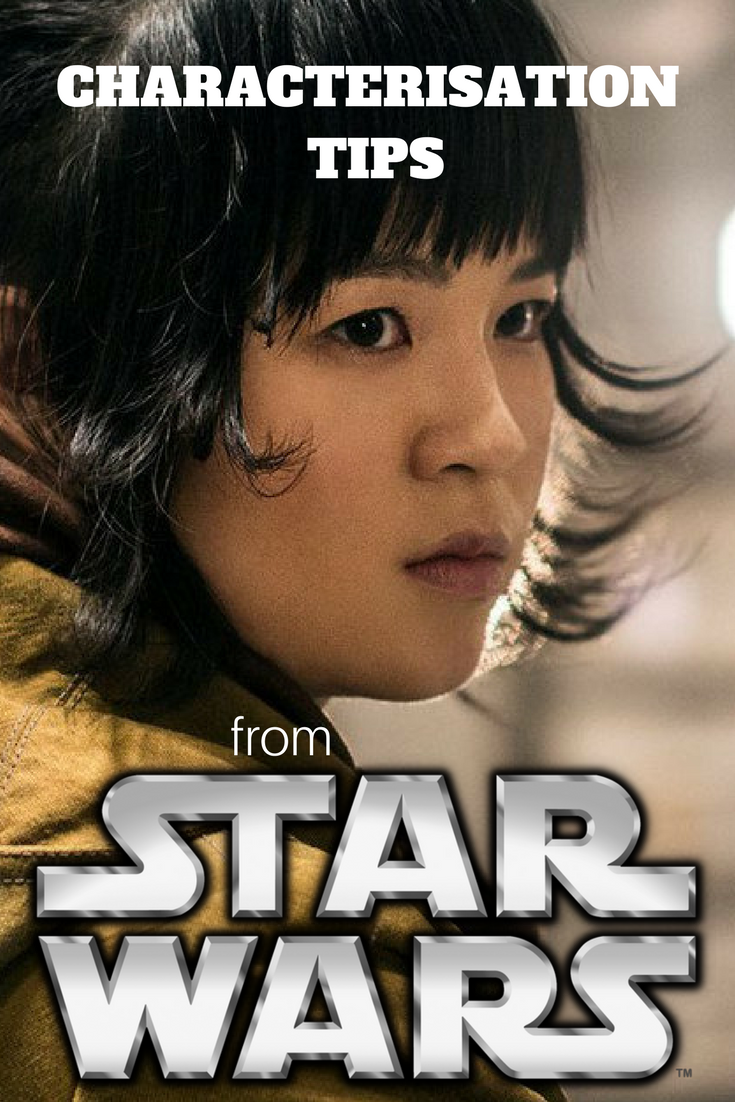
Learning about character introductions with Star Wars – The Last Jedi
In this article we’ll examine the introduction of the character Rose in the latest Star Wars film – The Last Jedi – and see how the writers create an interesting, sympathetic character with a few deft strokes.
The Star Wars franchise has had its ups and downs – the original movies created some of the most memorable and loved characters in popular culture, and arguably the following trilogy failed to live up to that standard. Many of the characters were two dimensional, and the few that were memorable were not necessarily for good reasons (two words: floppy ears).
However, in my opinion, the latest instalment in the series has found its feet again, with digression from the standard tropes it had been leaning on, and by creating better quality characters.
One of the things that stood out the most was how swiftly the character Rose became likeable and memorable, so I thought it would be useful to analyse how that was achieved.
SPOILER ALERT – I’m going to describe how Rose is introduced. If you think this will impair your enjoyment of the film, then stop reading now.
Let’s begin.
Commentary on Rose’s introductory scene in The Last Jedi
The first we see of Rose is a girl weeping in a quiet corner of the ship. Crying in itself is not necessarily going to invoke sympathy from others; we may think she should just suck it up and stop being such a wimp. But we very quickly see that she is holding necklace that matches that of the pilot of the bomber ship from earlier. That pilot gave her life in order to complete the mission in a clearly heroic scene.
This is effective on several levels. Firstly, we have sympathy for her because she has just suffered the death of a very close loved one, which is a justifiable reason for the depth of her sorrow. Secondly, she is associated with a hero and some of that stardust rubs off on her. It’s a pretty good start for a few seconds of screen time, before she’s even said a word.
We focus on Finn for a bit, and the next time we see Rose, she has spotted him and is star struck. Again, this could come off as annoying or infantile, but her stumbling over words ‘doing the talking’ with self-deprecating self-awareness of her behaviour comes across as endearing and funny.
We learn that it was her sister piloting the ship and she expresses that principles and loyalty were of great importance to both of them.
Next, Rose informs Finn that she’s already tazered several people who were trying to desert the battle, and shows her disapproval of such actions. So we learn that she’s a bit of a baddass, that she acts on her principles, and that she has little tolerance for weakness or disloyalty.
Finally, we see her spot Finn’s bag and watch the realisation dawn that he was trying to escape.
So now she has a choice. This guy is her hero, and two minutes ago she was fawning over him. Will she make an exception to her principles and let him go in order to ingratiate herself with him?
Hell, no. She doesn’t even think twice before she gives him a deeply disapproving look and tasers him.
Summary of techniques used to build character and empathy with Rose
So, that’s a summary of Rose’s intro scene. Let’s recap what devices were used to achieve what impact:
| Characterisation | Method |
| We have empathy with Rose | Because she has recently lost a loved one |
| Rose is associated with heroes | We watched her sister make the ultimate sacrifice with our own eyes not very long ago |
| Rose is flawed | She stumbles over her words as she is starstruck |
| Rose is self-aware and self-deprecating (and funny) | Muttering to herself about her word salad |
| Rose is loyal | She explains that she has been stopping people deserting |
| Rose is a bit of a badass | She’s not afraid to user her tazer |
| Rose sticks to her principles | She doesn’t hesitate to tazer her hero when she deems it appropriate |
The table above shows how various characteristics have been presented without ever ‘telling’ us anything directly, and all within just a few minutes.
Using the techniques to improve your writing
Here are a few questions to help consider this analysis with your own writing:
Please tell us your thoughts and comments below!
- Do your characters have as many nuances as Rose does in this scene?
- Do you introduce new characters with enough aspects of their personality within the first few paragraphs / pages?
- Do you use a range of techniques like those above to introduce various characters and build empathy?
- Can you think of other techniques that could be used to build character? (please share below!)
Why not try to write an introduction scene for a new character using the techniques above?
If you’ve found this article helpful, please share it and check out some of our other posts.
Here are some you might find interesting:
